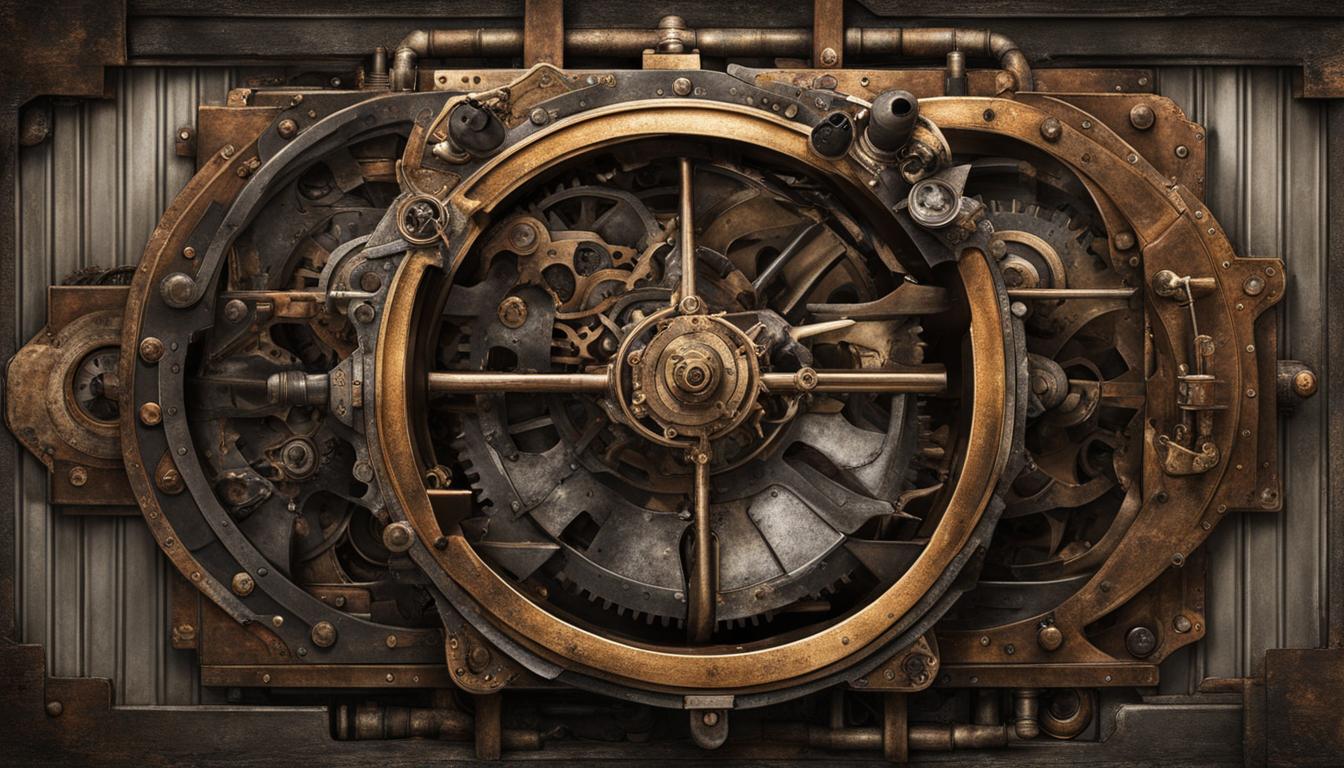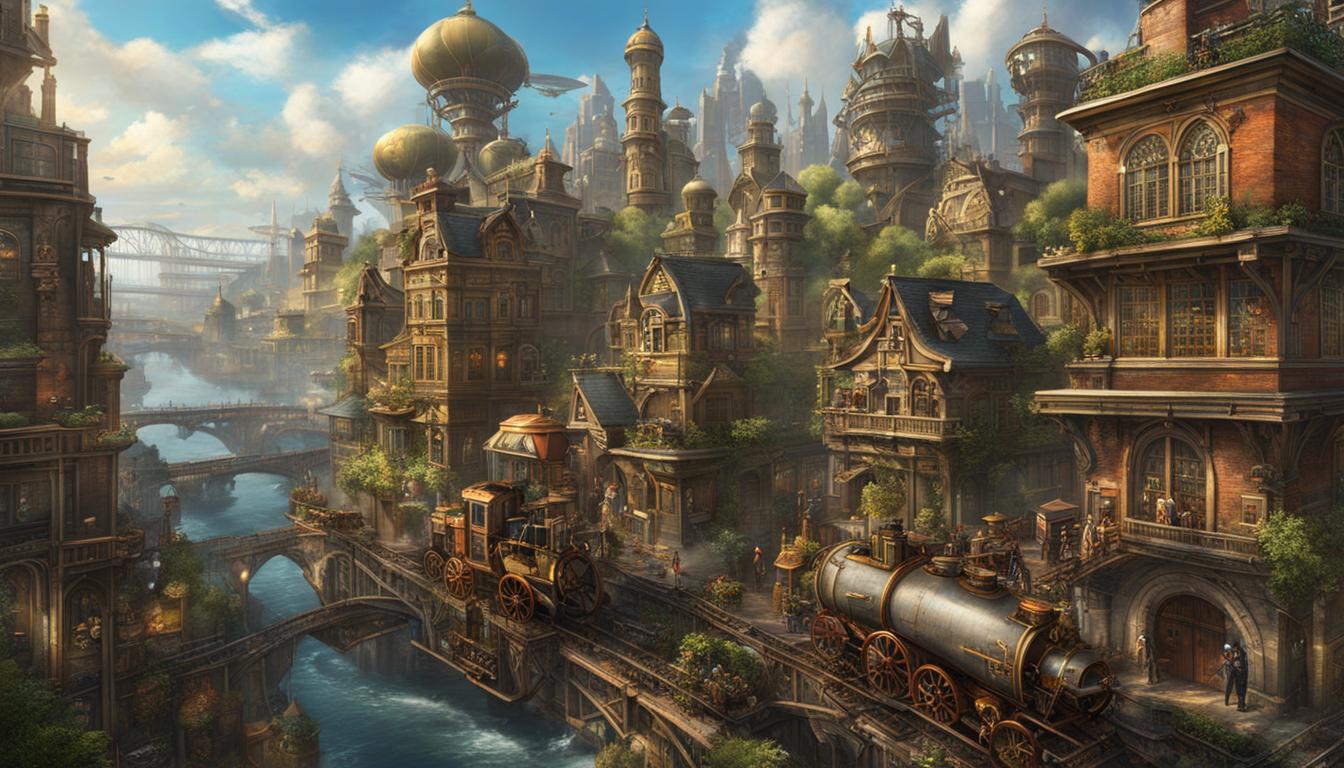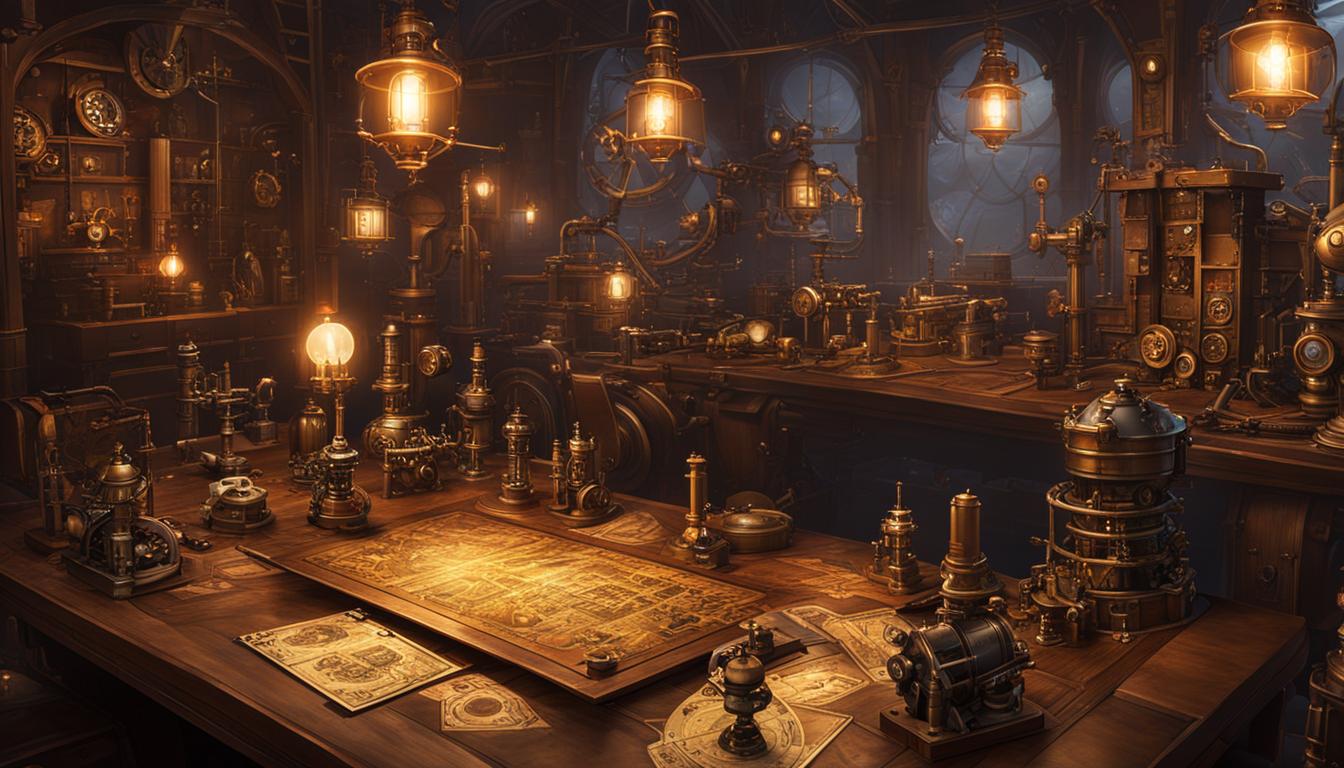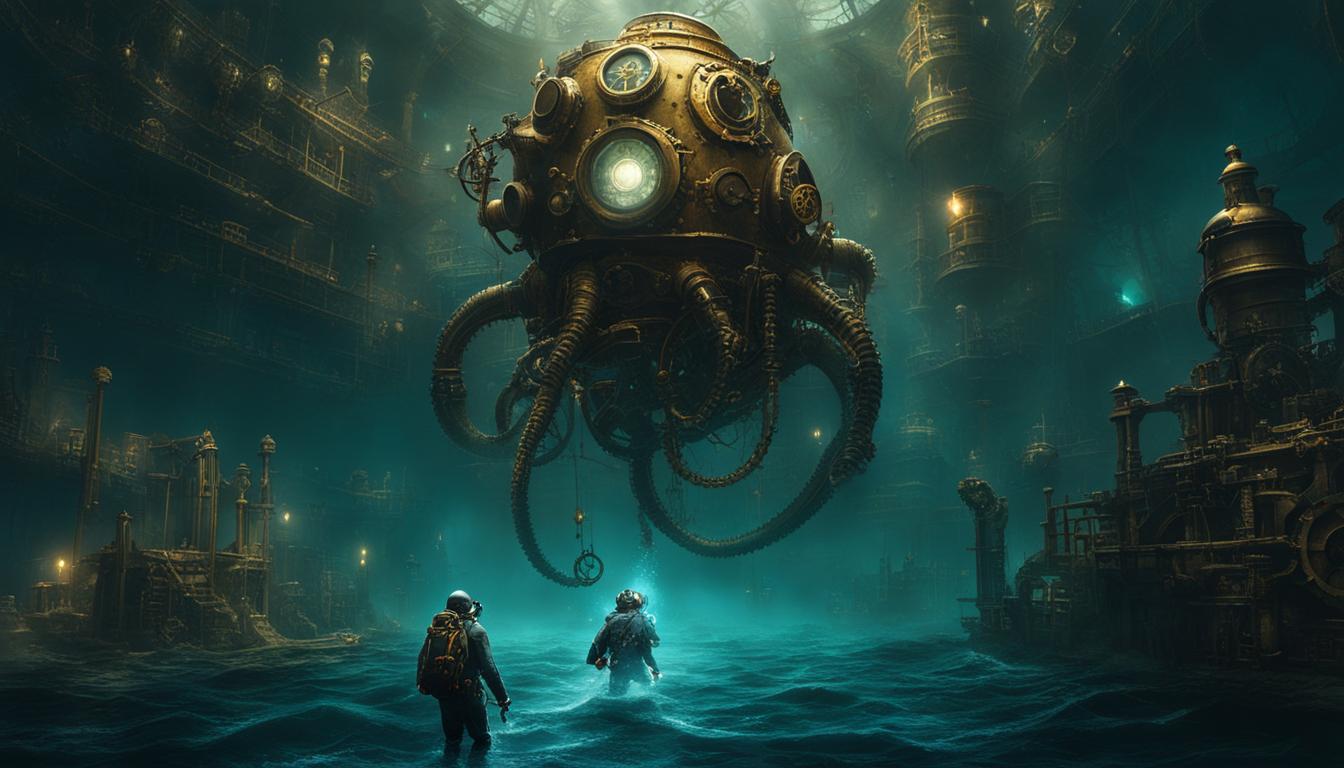Diesel punk and steampunk are two captivating retro-futuristic genres that have captured the imaginations of many. While they may have similarities, there are distinct differences that set them apart. Understanding these differences can help enthusiasts appreciate the unique aspects of each genre and explore their potential for blending.
Key Takeaways:
- Diesel punk and steampunk have different settings and technologies.
- Steampunk is set in a Victorian-era world with steam-based technology, while dieselpunk is centered around the interwar period with diesel-based technology.
- Thematic differences arise from these contrasting settings, with steampunk embracing the optimism and unrest of the Victorian era, while dieselpunk delves into the chaos of the early 20th century.
- Aesthetically, steampunk draws inspiration from the Industrial Revolution, while dieselpunk incorporates elements of the Jazz Age.
- Both genres have had a significant impact on art, music, and design, influencing works across various mediums.
Exploring the Themes of Diesel Punk and Steampunk
The themes present in diesel punk and steampunk provide further insight into their differences. Steampunk taps into the social upheaval and philosophical changes of the Victorian era, with an exploration of scientific materialism, social class divide, and industrial revolution. It combines optimism and discontent, creating a world locked in historical currents. On the other hand, dieselpunk delves into the chaos and turmoil of the early 20th century, with a focus on the impact of World War I, the rise of fascism, and the dominance of industrialism. It often incorporates elements of film noir, war machinery design, art deco, and totalitarian propaganda. These thematic differences give each genre its unique feel and narrative depth, while allowing for the blending of elements and the exploration of new storytelling possibilities.
“In steampunk, we see the clash between tradition and progress, while dieselpunk embraces the struggle between order and chaos,” says renowned author and genre enthusiast, Jane Johnson.
“Steampunk thrives on the idea of the Victorian era reinventing itself with advanced technology, while dieselpunk reflects the anxieties and uncertainties of the interwar period, grappling with the consequences of rapid industrialization and global conflict.”
These themes offer a rich tapestry for storytellers to weave intricate narratives, exploring the human experience within alternative historical contexts.
The contrast in themes between diesel punk and steampunk also creates opportunities for crossover stories. Authors and creators have taken inspiration from both genres, blending elements to create unique narratives that push the boundaries of retro-futuristic storytelling. One such example is the critically acclaimed graphic novel, The Clockwork Diesels, where the two genres collide in a world where the steam-powered Victorian society clashes with the gritty dieselpunk underworld. These crossover stories allow for exploration of themes such as technological evolution, societal change, and the consequences of unchecked progress.
Influences and Convergence
While each genre possesses its own distinct themes, there can be influences and convergence between diesel punk and steampunk. Some steampunk works incorporate elements of dieselpunk, blurring the boundaries and showcasing the evolution of both genres. This convergence brings fresh perspectives and allows for a broader range of storytelling possibilities, enriching the overall retro-futuristic landscape.
As the line between diesel punk and steampunk continues to blur, it becomes crucial to understand the differences in themes that define each genre. This knowledge not only enhances our appreciation for the distinct characteristics of diesel punk and steampunk but also encourages us to explore the uncharted territory where their themes converge. The exploration of these themes unlocks the potential for new and exciting narratives that challenge conventions and captivate the imaginations of retro-futuristic enthusiasts.
Comparing the Aesthetics and Cultural Impact of Diesel Punk and Steampunk
The unique aesthetics and cultural impact of diesel punk and steampunk contribute significantly to their distinct identities and fan bases. While both genres fall under the umbrella of retro-futuristic aesthetics, their visual styles and cultural influences set them apart.
Diesel Punk Fashion and Art
Diesel punk fashion draws inspiration from the interwar period, combining elements of the Jazz Age, mobsters, and the machinery of war. It embraces the ruggedness of the era with fashion choices such as fedoras, zoot suits, bomber jackets, and military-inspired attire. The art associated with diesel punk often reflects the grittiness of the time, with its bold lines, industrial themes, and dark color palettes.
Steampunk Fashion and Art
In contrast, steampunk fashion takes its cues from the Victorian era and the Industrial Revolution. It embodies elegance and sophistication, featuring corsets, top hats, goggles, and Victorian-inspired attire. Steampunk art showcases the intricate mechanics and ornate designs of steam-powered machinery, often incorporating brass, gears, and clockwork motifs.
A Comparative Overview
| Diesel Punk | Steampunk | |
|---|---|---|
| Setting | The interwar period | Victorian era |
| Technology | Diesel-based | Steam-powered |
| Fashion | Fedoras, zoot suits, bomber jackets | Corsets, top hats, goggles |
| Art | Bold lines, industrial motifs | Brass, gears, clockwork |
These aesthetic differences have had a significant cultural impact, influencing various art forms, music, and design. Diesel punk and steampunk have spawned vibrant subcultures, with conventions, events, and communities dedicated to celebrating and exploring these retro-futuristic worlds.
“Diesel punk and steampunk are like two sides of a time-traveling coin, each offering its own visual allure and captivating narratives.” – Anonymous enthusiast
Blending elements of diesel punk and steampunk creates exciting possibilities for creative expression and storytelling. By combining the ruggedness of diesel punk with the elegance of steampunk, enthusiasts can create unique aesthetics that push the boundaries of both genres. Whether one is drawn to the gritty chaos of diesel punk or the Victorian elegance of steampunk, both genres provide endless opportunities for imaginative exploration.
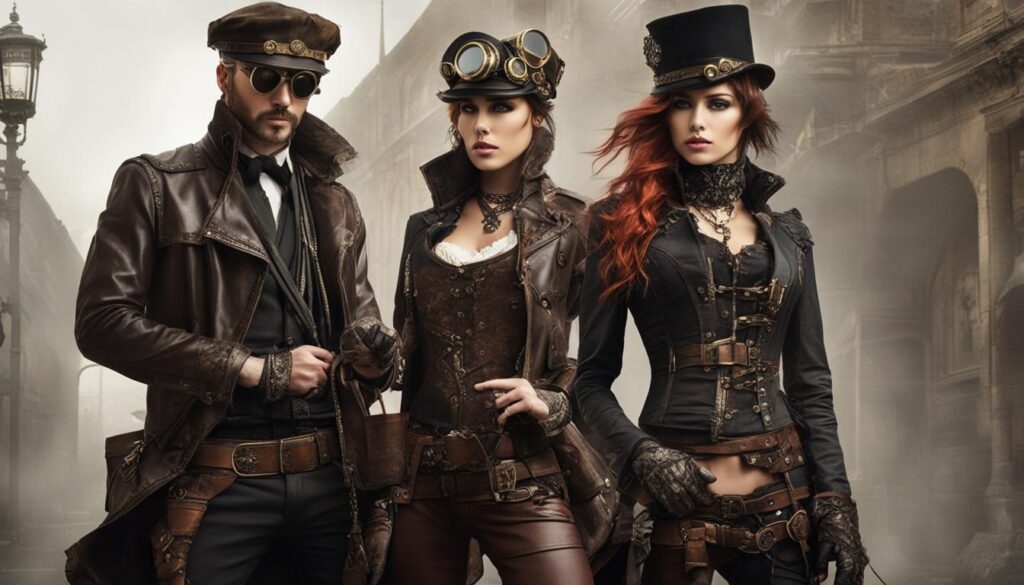
Embracing the Diversity Within Retro-Futuristic Genres
When it comes to retro-futuristic genres like diesel punk and steampunk, diversity is the name of the game. These captivating worlds offer endless opportunities for creativity and storytelling, with each genre bringing its unique flavor. But here’s the exciting part – they aren’t bound by strict rules. Artists and enthusiasts can explore new interpretations, blending elements that bridge the gap between diesel punk and steampunk.
Some works push the boundaries, blurring the line between the two genres and redefining the retro-futuristic aesthetic. Whether it’s a utopian vision or a post-apocalyptic world, a nostalgic reflection or a gritty exploration of war and technology, the diversity within these genres knows no bounds. So, if you find yourself torn between the Victorian elegance of steampunk and the gritty chaos of diesel punk, fear not – there’s room for both.
Understanding the differences between diesel punk and steampunk is key to fully appreciating the potential for blending these genres. While they may have distinct features and themes, they share a common thread of retro-futurism. By embracing the diversity within retro-futuristic genres, we continue to redefine and expand the boundaries of these imaginative worlds. So, unleash your creativity, let your imagination run wild, and discover the magic that lies within the fusion of diesel punk and steampunk.
FAQ
What is the difference between diesel punk and steampunk?
Diesel punk is set in the interwar period with diesel-based technology, while steampunk is set in a Victorian-era world with steam-powered machinery.
What are the thematic differences between diesel punk and steampunk?
Steampunk explores the optimism and unrest of the Victorian era, while diesel punk delves into the chaos and turmoil of the early 20th century.
How do the aesthetics and fashion of diesel punk and steampunk differ?
Steampunk draws inspiration from the Industrial Revolution, while diesel punk incorporates elements of the Jazz Age and war machinery design.
What impact do diesel punk and steampunk have on art and design?
Both genres have a significant impact on art, music, and design, influencing works across various mediums and creating vibrant subcultures.
Can elements from diesel punk and steampunk be blended together?
Yes, artists and enthusiasts can explore new interpretations and push the boundaries of these genres, blurring the line between the two and creating a unique retro-futuristic aesthetic.
What storytelling possibilities do diesel punk and steampunk offer?
These genres allow for a range of narratives, from utopian visions to post-apocalyptic worlds, from nostalgic reflections to gritty explorations of war and technology.
How can retro-futuristic genres like diesel punk and steampunk be redefined?
By embracing the diversity within these genres, we can continue to redefine and expand the boundaries of these captivating worlds.
What opportunities do diesel punk and steampunk offer for creativity and storytelling?
Whether one’s preference lies with the Victorian elegance of steampunk or the gritty chaos of diesel punk, these genres offer endless opportunities for creativity and storytelling.

